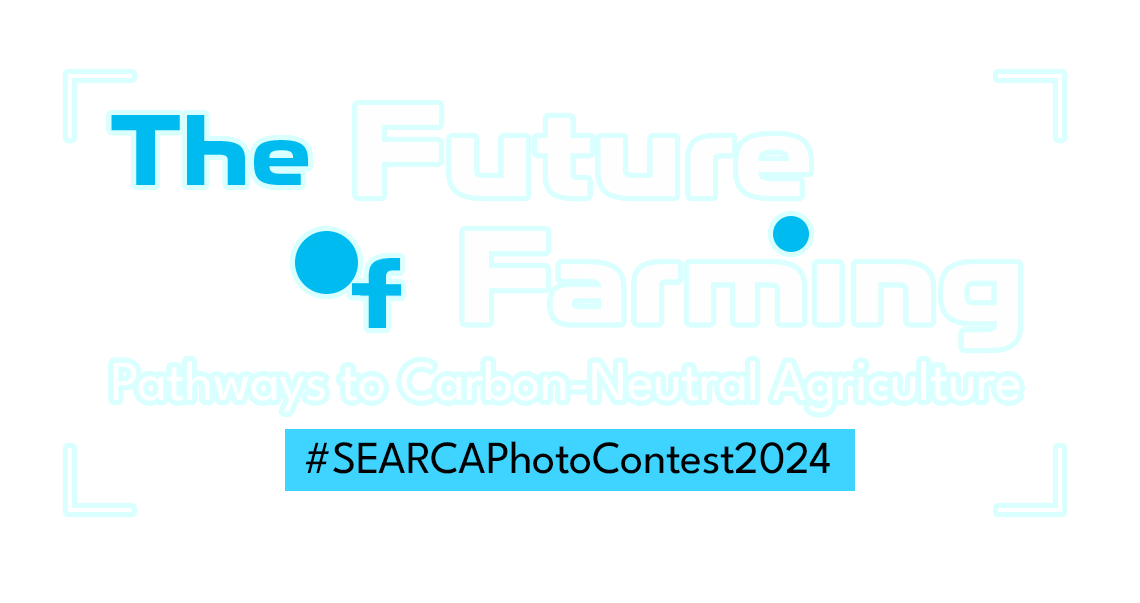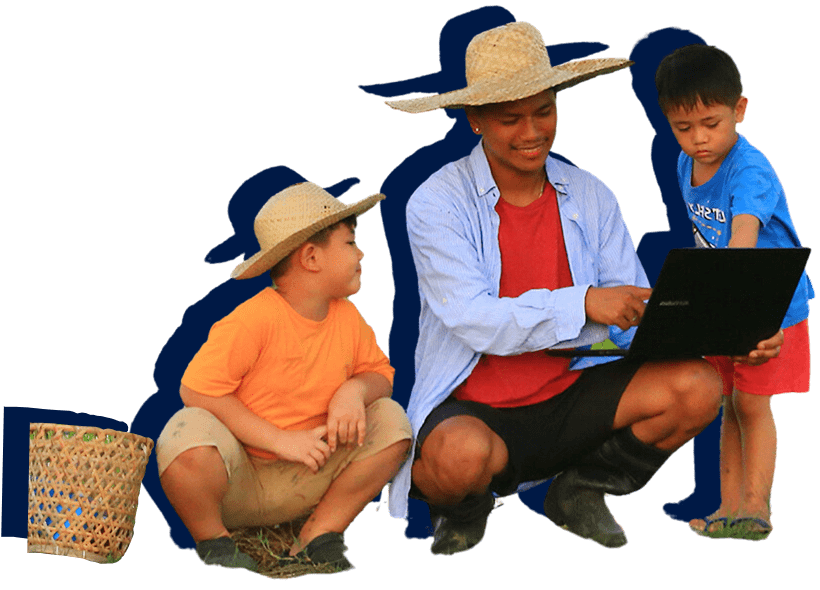
The Future of Farming
Pathways to Carbon-Neutral Agriculture
Evoking a hopeful future full of life, predominantly green-colored images bagged the top awards in the recently concluded SEARCA Photo Contest 2024, which was launched in November 2024.
Themed "The Future of Farming: Pathways to Carbon-Neutral Agriculture," the 18th run of the annual SEARCA Photo Contest awarded the first prize (USD 1,000) to Jayson Berto of the Philippines for his entry featuring a university student inside a hydroponics tower garden. The urban gardening practice, a sustainable farming system, is gaining traction as it responds to dwindling land and water resources.
The seven awards are composed of three major prizes and four special ones, which emerged from a series of grueling evaluation stages by experts in the fields of sustainable agriculture and ecology and professional photographers and creatives. SEARCA received a total of 653 entries from 166 amateur and professional photographers across eight Southeast Asian countries.
Winners
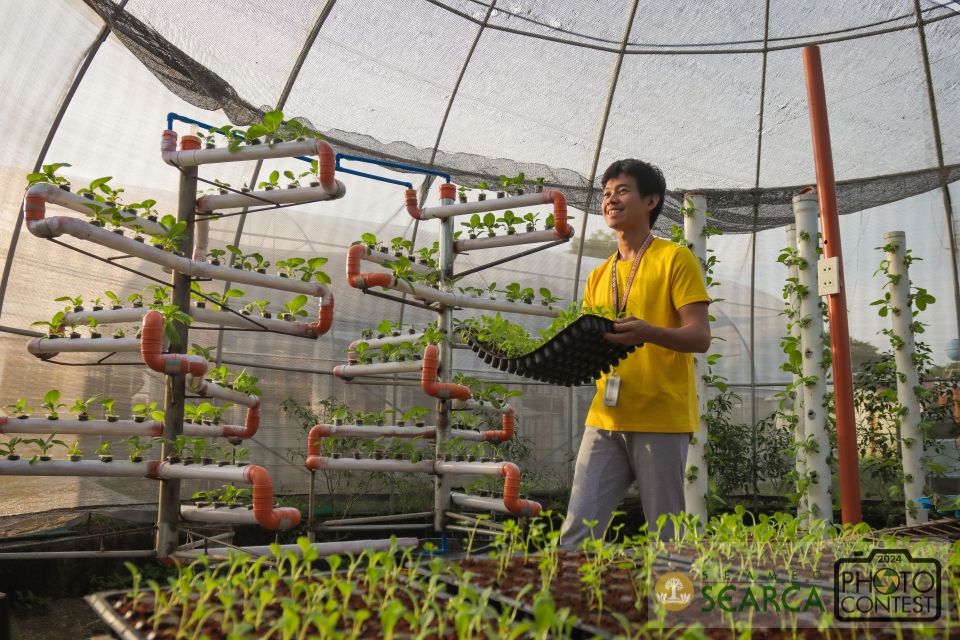
First Prize
JAYSON BERTO
The Philippines
Caption by photographer: Crop growing is cooler with the hydroponics tower garden of the Central Luzon State University students! The method is soil-less, making water use more efficient. It also requires less space compared with conventional farming, as leafy vegetables are planted in vertical pots.
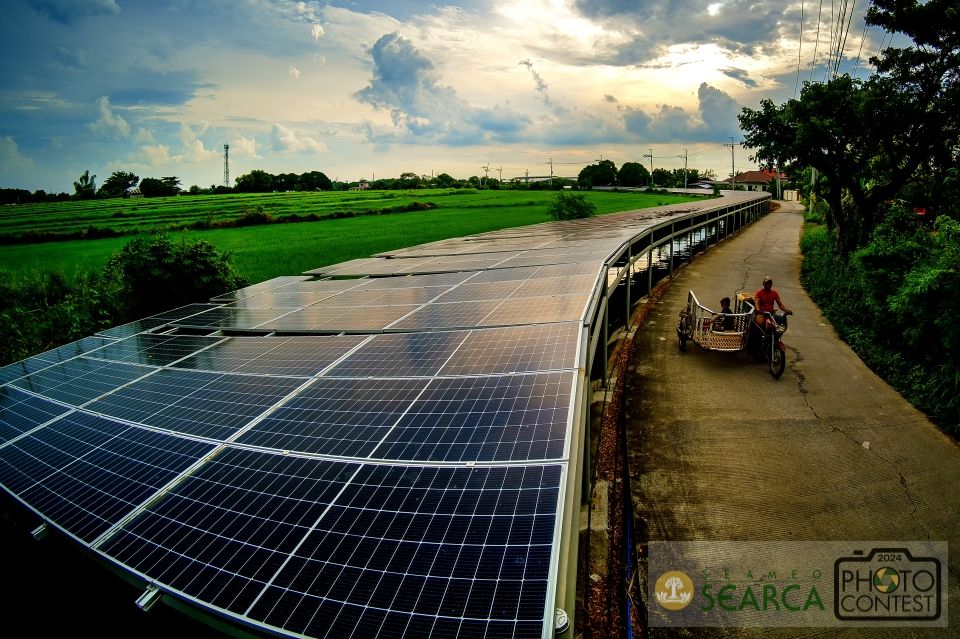
Second Prize
KLIENNE ECO
The Philippines
Caption by photographer: The development of solar irrigation technology is bringing about a bright future for agriculture in the Philippines. By replacing costly diesel pumps, our objective is to alleviate the financial burden on farmers and promote a more sustainable farming ecosystem.
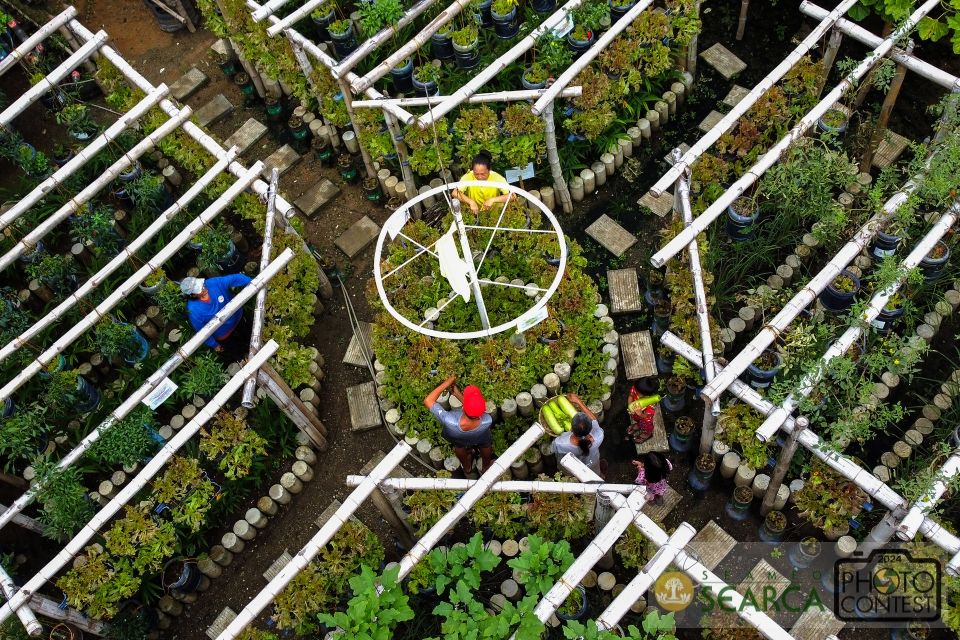
Third Prize
MARK LINEL PADECIO
The Philippines
Caption by photographer: In the city of Mandaue, the community has embraced containerized gardening as an innovative and resilient solution to address today's food security challenges, particularly in urban areas. This approach empowers residents to grow their own food at home, ensuring access to fresh produce even amid food shortages. Beyond its role in promoting food security, containerized gardening also serves as an environmentally conscious practice. By repurposing used containers, such as plastic bottles, boxes, or old pots, it prevents these items from becoming waste, thereby reducing plastic pollution in the environment. Read more.
This practice not only provides individuals with the tools to be more self-sufficient but also fosters a sense of community engagement, as neighbors and local groups often share gardening tips, seeds, and resources. The combination of sustainability and self-sufficiency allows Mandaue residents to contribute directly to both their personal well-being and the health of the planet. As a result, this initiative has proven to be a win-win for the local community and the environment, making it an exemplary model for other urban areas facing similar food security and environmental concerns. Less.
Special Awards
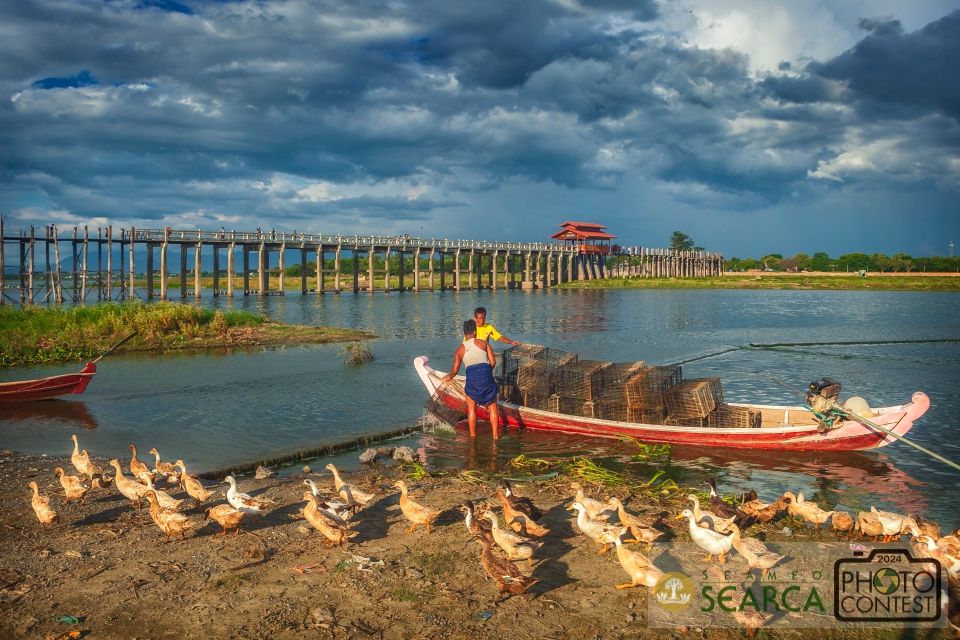
SEARCA Director's Choice
KYAW ZAY YAR LIN
Myanmar
Caption by photographer: The duck breeders are also into fishing, using natural methods for their livelihood.

Philippine Department of Education Secretary's Choice
MIN MIN ZAW
Myanmar
Caption by photographer: Under a spectacular, star-filled night sky, two Inle fishermen work in their small wooden boat. Wearing conical hats and traditional clothing, they use small lights to illuminate their fishing nets. The nets and their reflections are clearly visible in the calm water. The Milky Way stretches across the sky, creating a striking contrast with the dark water and the illuminated figures. Their peaceful labor highlights the traditional fishing practices and the connection between the fishermen, the lake, and the cosmos.
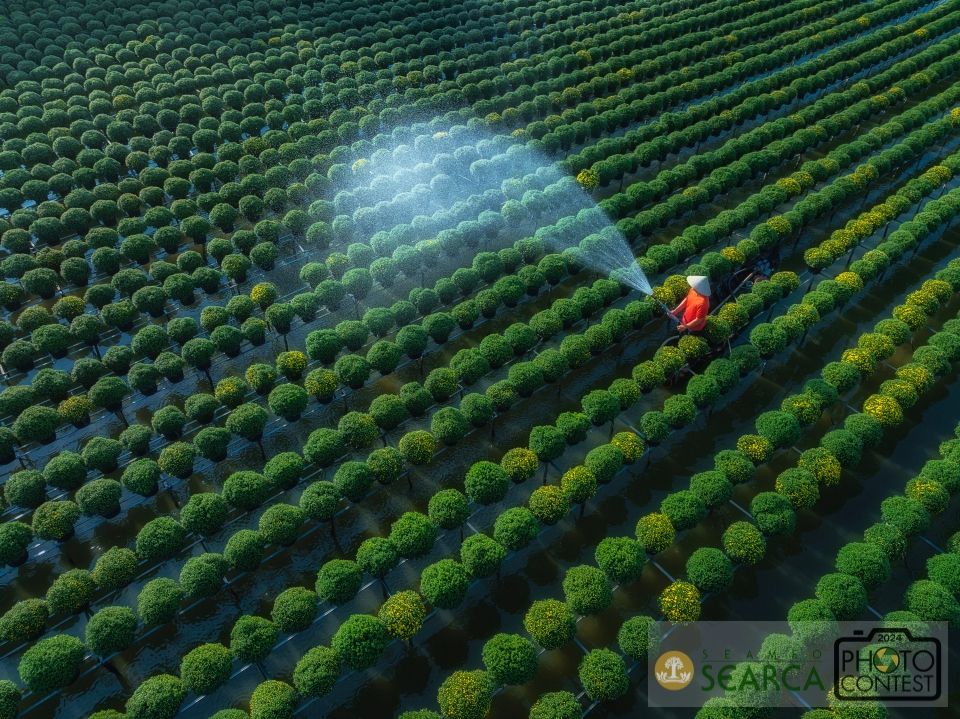
People's Choice
AUNG CHAN THAR
Myanmar
Caption by photographer: A vision of a sustainable future, this image showcases a farming system that works in harmony with nature. The intricate network of waterways and floating gardens provides a model for how we can cultivate food (and flowering plants) while minimizing our impact on the environment.
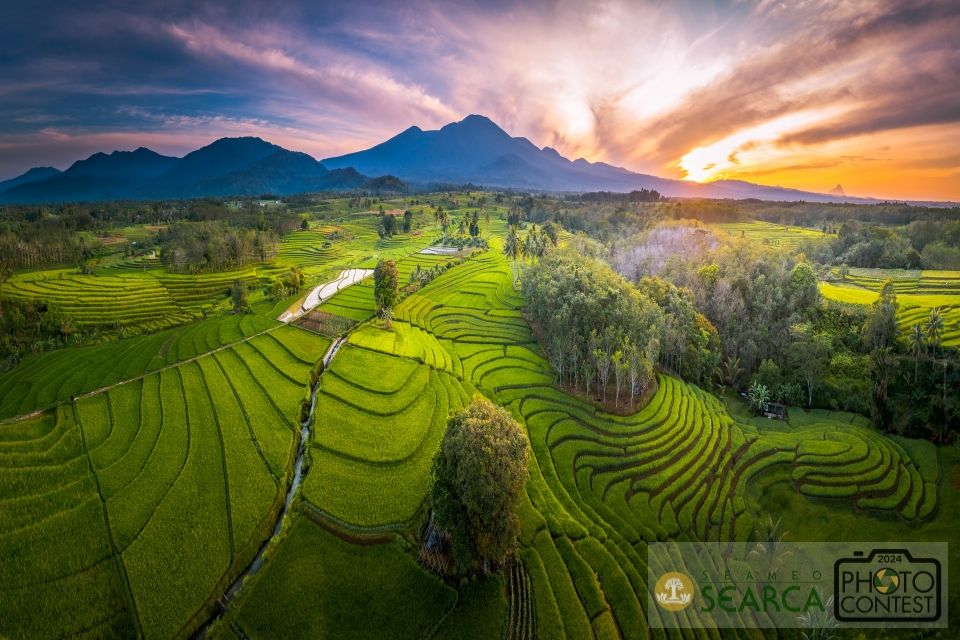
Best Youth Photographer
RAHMAD HIMAWAN
Indonesia
Caption by photographer: Capturing the atmosphere and natural beauty of the countryside in the morning, with mountains and rice fields in North Bengkulu Regency, Indonesia, during the rice season.
Finalists
Listed in no particular order
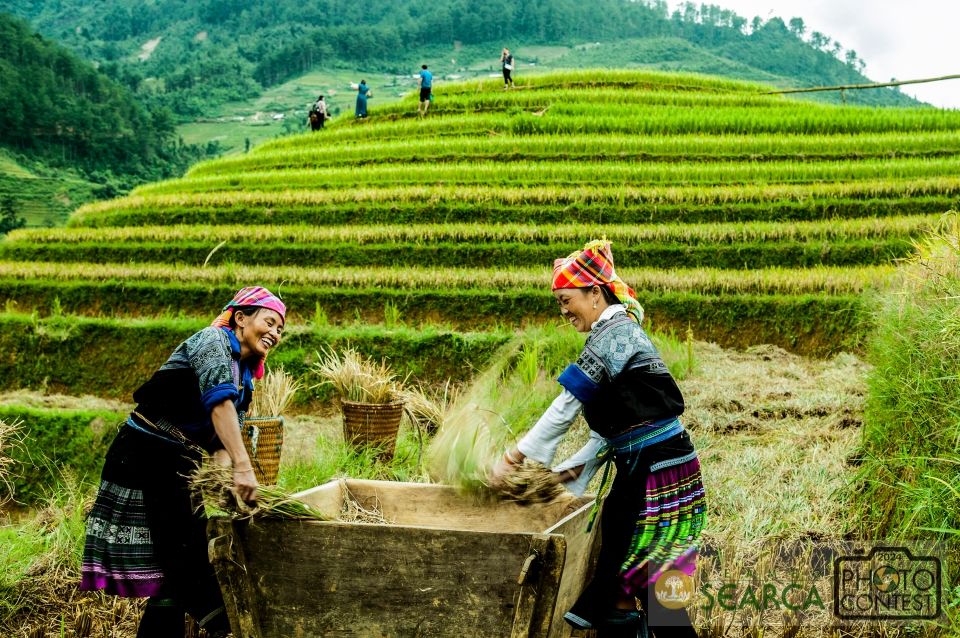
Huy Dang Pham
Caption by photographer: H'Mong ethnic people harvest wet rice.
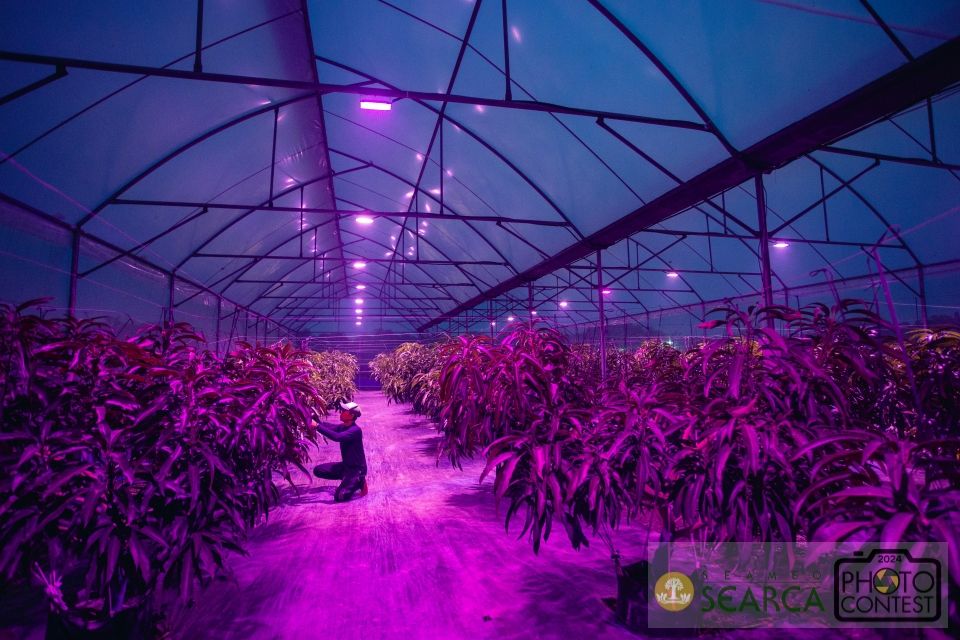
Dedi Suwidiantoro
Caption by photographer: Farmers from the Salam Tani group care for Miyazaki mango plants cultivated with ultraviolet light in Sliyeg, Indramayu, West Java, Monday (10/28/2024). The use of Internet of Things (IoT)-based ultraviolet lights is to accelerate the flowering process so that it can increase mango production.
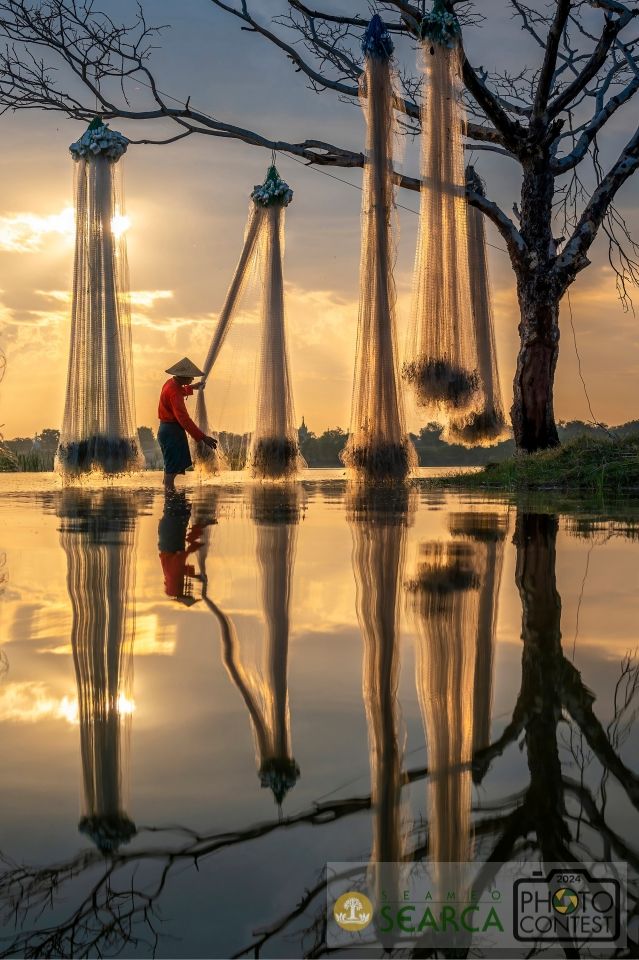
Myat Zaw Hein
Caption by photographer: This image captures a fisherman diligently tending to his nets, a scene central to his livelihood. The large nets, stretched across the water, represent his means of catching fish—a crucial source of income and sustenance for him and his family. Read more. The effort he puts in, visible in his silhouette as he works at sunrise or sunset, highlights the labor involved in this profession. The tranquil beauty of the setting—the calm water, the colorful sky—underscores the connection between the fisherman's work and the natural environment. Improving the efficiency and sustainability of these fishing practices, perhaps through better net technology or sustainable fishing regulations, directly impacts this fisherman's ability to provide for himself and his community, ultimately improving his livelihood. Less.
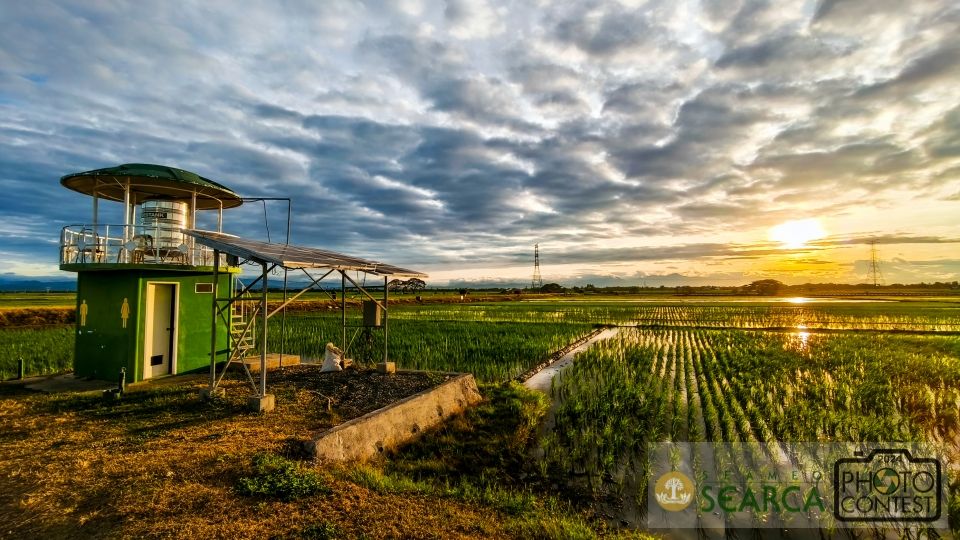
Carlo Dacumos
Caption by photographer: As the sun rises, this solar panel stands ready to harness clean energy, powering irrigation without leaving a carbon footprint. This simple yet powerful solution offers a glimpse into the future of farming—sustainable, efficient, and kind to the environment. With every ray of sunlight, it paves the way for carbon-neutral agriculture, proving that innovation and nature can work hand in hand to secure a greener tomorrow. A true step forward for the future of farming!
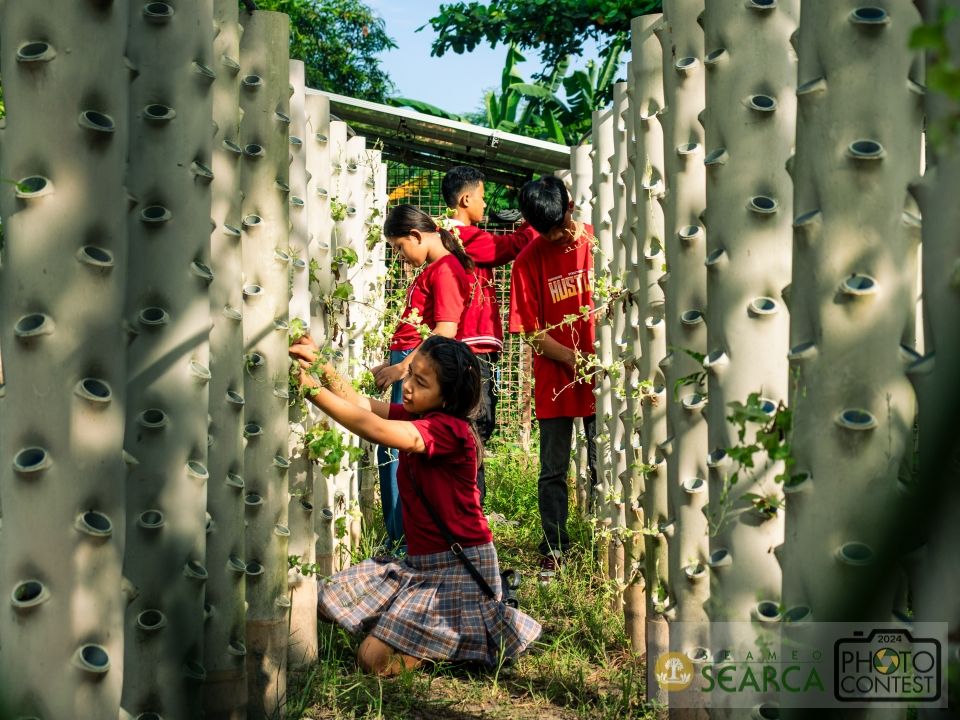
Mark Nylle Baun
Caption by photographer: For a Smarter & Greener Future
In the heart of a schoolyard, where lessons extend beyond books, young hands carefully tend to a towering garden of possibility. This vertical farm is more than a source of fresh produce—it is a solution to climate-conscious agriculture. By maximizing space, reducing the need for deforestation, conserving water, and minimizing transportation emissions, vertical farming lowers agriculture’s carbon footprint. Here, students are not just growing plants; they are nurturing a future where food production is smarter, greener, and in harmony with the planet.
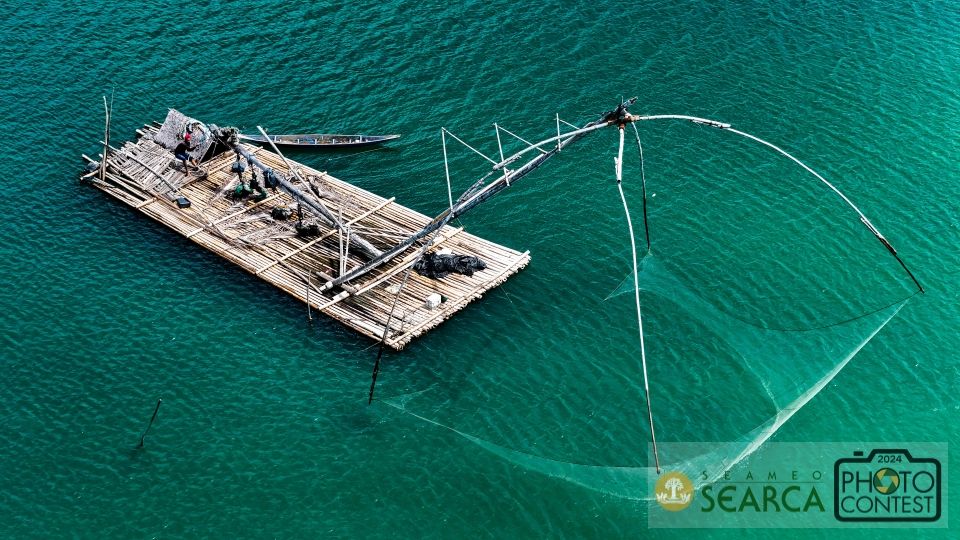
Marlo Demo-os
Caption by photographer: "Surambao – A Sustainable Fishing Practice in Brgy. Cagay: Harnessing Tradition and Nature"
In the serene waters of Brgy. Cagay, Roxas City, Capiz, on Panay Island, stands the surambao, a towering testament to sustainable fishing practices deeply rooted in indigenous knowledge. Crafted from locally sourced wood and bamboo, this ingenious stationary fishing gear attracts fish with its light at night, luring them into a submerged net that is carefully hauled every 30 minutes. Read more.
Part of the Palina Greenbelt Ecopark Tour in the Province of Capiz, this fishing village showcases its surambao as both a livelihood tool and an educational highlight for visiting tourists. Here, the community preserves its traditions while promoting eco-friendly practices, offering visitors a unique glimpse into the harmony of nature and culture. Less.

Emman Foronda
Caption by photographer: By growing food in urban spaces, such as through community plots or home gardens, we can directly reduce the carbon footprint associated with food delivery. Traditionally, much of the food in urban areas is transported from distant farms or even other provinces, contributing to significant greenhouse gas emissions due to transportation and packaging. However, by cultivating fresh produce locally, the need for long-distance food transport is minimized, leading to fewer emissions and less environmental impact.

Myat Zaw Hein
Caption by photographer: The traditional Inle fishing technique, practiced by Myanmar's Intha people, involves balancing on small bamboo rafts and using conical nets to catch fish. This method is vital for local communities, preserving cultural heritage and providing a sustainable livelihood through low-cost, eco-friendly practices. It also boosts tourism, offering economic benefits. Environmentally, the technique is sustainable as it avoids overfishing, minimizes habitat disruption, and protects biodiversity by allowing smaller fish to escape. Its reliance on manual labor and natural materials reduces pollution, which is crucial for Inle Lake's health amid challenges like agricultural runoff. This traditional practice exemplifies harmony between human activity and nature, offering a model for sustainable fishing and ecological preservation. Protecting this method supports both local communities and global environmental goals.

KoTooToo
Caption by photographer: In the early morning light, the sounds of harvesting rice boom across the fields. Farmers defy the sun and harvest the grain. The harvested grain is separated from the seeds and loaded onto the bullock cart. Some work in traditional crafts in countries that are not industrialized.
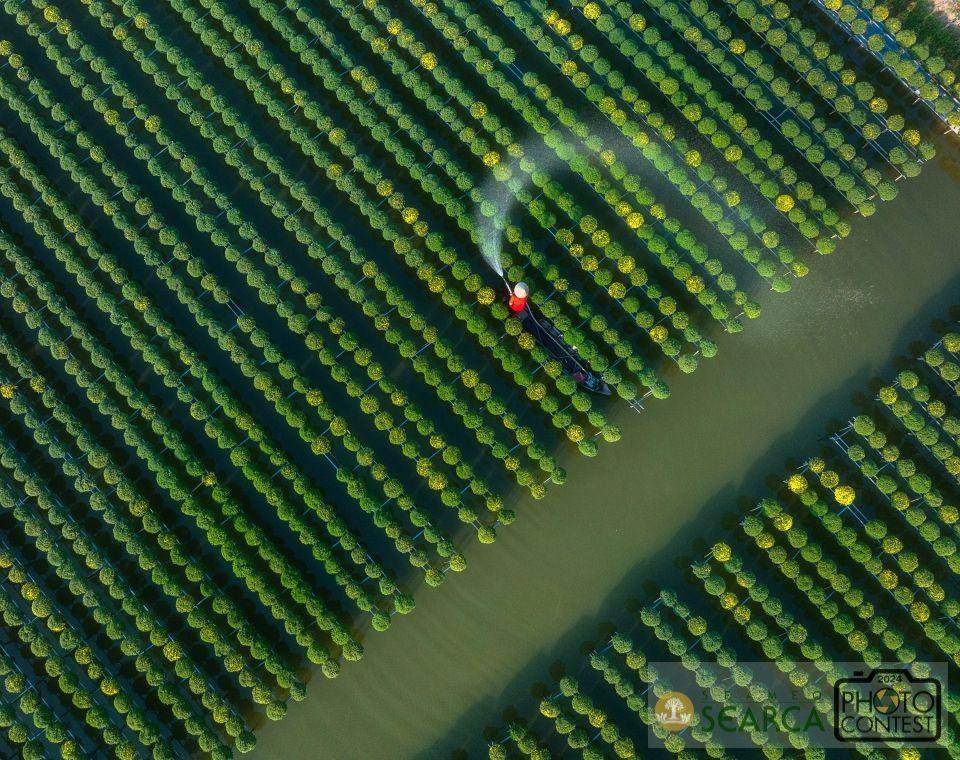
Aung Chan Thar
Caption by photographer: This aerial view captures a unique and innovative approach to farming, where vibrant flower fields thrive on a network of waterways. This sustainable practice minimizes land use, reduces reliance on traditional fertilizers, and offers a glimpse into the future of carbon-neutral agriculture.
Judges
Final Round Judges
Dr. Herqutanto
SEAMEO Regional Centre for Food and Nutrition (SEAMEO RECFON)
Indonesia
Dr. Majah-Leah Ravago
SEAMEO Regional Centre for Educational Innovation and Technology (SEAMEO INNOTECH)
The Philippines
For. Lourdes Breva
Department of Environment and Natural Resources-Ecosystems Research and Development Bureau (DENR-ERDB)
The Philippines
Mr. Neil Cervantes
Interactive Arts Services-Manila, Inc.
The Philippines
Ms. Reigna Belle Aguja
East Asian-Australasian Flyway Partnership
The Philippines
Asst. Prof. Rovil Espiritu
College of Development Communication, University of the Philippines Los Baños (UPLB)
The Philippines
Dr. Thaddeus Lawas
University Extension Specialist II, School of Environmental Science and Management, University of the Philippines Los Baños (UPLB), and
Managing Editor, Journal of Environmental Science and Management
The Philippines
Special Award Judges
SEARCA Director's Choice:
DR. GLENN GREGORIO
SEAMEO SEARCA
The Philippines
Philippine Department of Education Secretary's Choice:
Hon. Sonny Angara
Department of Education (DepEd)
The Philippines
Best Youth Photographer:
Ms. Aina Angeline Buan
SEARCA Youth Ambassadors Platform (SAYAP)
The Philippines
Mr. Kim Louisse Patagnan
SEARCA Youth Ambassadors Platform (SAYAP)
The Philippines
Mr. Renz Tabadero
SEARCA Youth Ambassadors Platform (SAYAP)
The Philippines
Theme
The theme, "The Future of Farming: Pathways to Carbon-Neutral Agriculture," of the 18th Photo Contest of the Southeast Asian Regional Center for Graduate Study and Research in Agriculture (SEARCA), is timely as agriculture faces many challenges.
By 2050, the world will need to produce 70 percent more food and the demand is continuously growing as the population races toward 10 billion in 2050, says a UN report. Worldwide, around 800 million people suffer from hunger. And if things won't change, around 650 million (8%) of the world's population will still be undernourished by 2030. Read more.
In addition to these needs, the pressure to produce more is set in the backdrop of an intensifying climate change-related issues. Agriculture needs to thrive and be climate change-resilient while facing further challenges such less labor, less water, less agricultural land, lack of access to technologies, among other resources.
Workforce in agriculture is decreasing because expert farmers are aging and rural population are migrating to urban areas. Natural resources such as agricultural land and water are finite and in some areas, dwindling. Thus, farming has to go beyond "business-as-usual" agricultural production and operations. The goal goes beyond increasing productivity, it is about optimizing production in the midst of complex problems that touches on rural development, environmental, social justice, and food consumption outcomes (Pretty, et al, 2010).
Unfortunately, agriculture has a negative effect to climate. The share of food systems in releasing greenhouse gas (GHG) emission is estimated at 13 percent to 19 percent to the atmosphere yearly (Vermeulen et al, 2012). Another literature has an estimate of about 25 percent of the yearly GHG global emission (Rejinders, 2023). It is a well-known fact that GHGs are a primary cause of climate change, which are aggravating food and nutrition insecurity. Thus, agriculture has to be run differently with resilience and sustainability in mind through the use of advanced technology. The future of farming has to be more profitable, efficient, safe, and optimally environment-friendly.
This is where carbon-neutral agriculture comes in. The future of farming should be transformative so it can revolutionize the traditional farming by making environmental stewardship and sustainability the topmost priority. Simply put, it is a balancing act between GHG emission and its removal from the atmosphere, which should come out a net-zero carbon footprint. To achieve this, one needs to integrate this "balancing act" through sustainable farming practices aimed at reducing GHG emission and store more carbon in soil and plants. Aside from mitigating climate change, practicing this kind of agriculture hopes to help improve soil health, increase biodiversity, reduce water use, and produce better yields. Some of these practices include precise irrigation techniques, adopting renewable energy sources, and putting sustainable land management practices in place, among other things.
Therefore, this year's theme, "The Future of Farming: Pathways to Carbon-Neutral Agriculture," celebrates the innovations and solutions to the many issues and problems being faced by an Asian farmer in a sustainable and environment-friendly manner. Less.
FAO. Undated. How to feed the world in 2050. https://www.fao.org/fileadmin/templates/wsfs/docs/expert_paper/How_to_Feed_the_World_in_2050.pdf
Pretty, J.N., W. J. Sutherland, J. A. Ashby. 2010. The top 100 questions of importance to the future of global agriculture. International Journal of Agricultural Sustainability. November 2010 8 (4):219-236. DOI:10.3763/ijas.2010.0534
Rejinders, L. 2023. Climate-Neutral Agriculture? Environments 10 (5). https://doi.org/10.3390/environments10050072
Vermeulen, S.J., BM. Campbell, and J.S.I Ingram, 2012. Climate Change and Food Systems. Annual Review of Environment and Resources. Vol. 37:195-222. https://doi.org/10.1146/annurev-environ-020411-130608
What to Capture
The 18th SEARCA Photo Contest (2024), with "The Future of Farming: Pathways to Carbon Neutral Agriculture" as this year's theme, sought images from Southeast Asia showcasing agricultural technologies and practices that addressed issues and challenges in agriculture.
Photo submissions generally included the following:
Agricultural technologies that have a positive impact to farmers and farming communities while conserving natural resources.
Technologies or practices that increase yield or income for farmers and farming families in crop cultivation, livestock or fishery while reducing wastes.
Agricultural practices or technologies developed by local communities or the youth using indigenous materials or tribal knowledge.
Specifically, this also included:
Regenerative ways of farming production that promote technologies such as permaculture, agroforestry, organic farming, and peri-urban farming, among other practices.
New agribusiness models that introduce platforms for sharing assets (machines, storage, and primary processing; clusters to increase information flow across the value chain (certifications, direct marketing, and e-commerce- based distribution models).
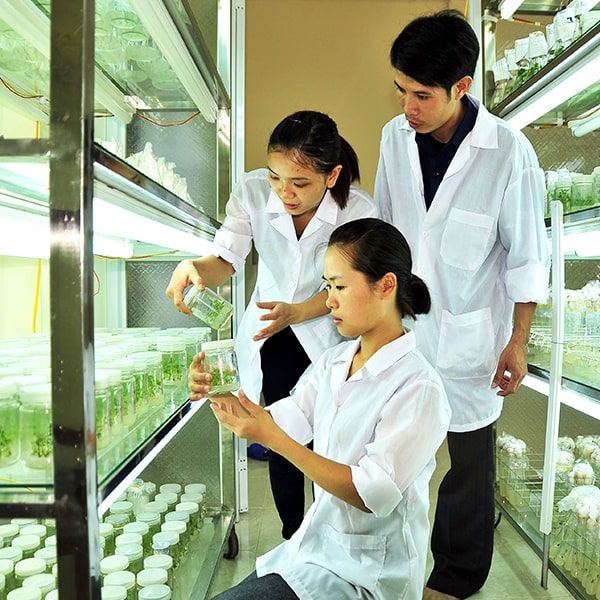
Technologies that discourage waste or farm losses such as postharvest technologies.
Technologies and practices that make use of waste and by-products such as using them as feeds, compost, or have further use in nonfood value chains (bioplastics, etc.).
Biomass energy solutions such as anaerobic biodigesters to produce biogas and compost.
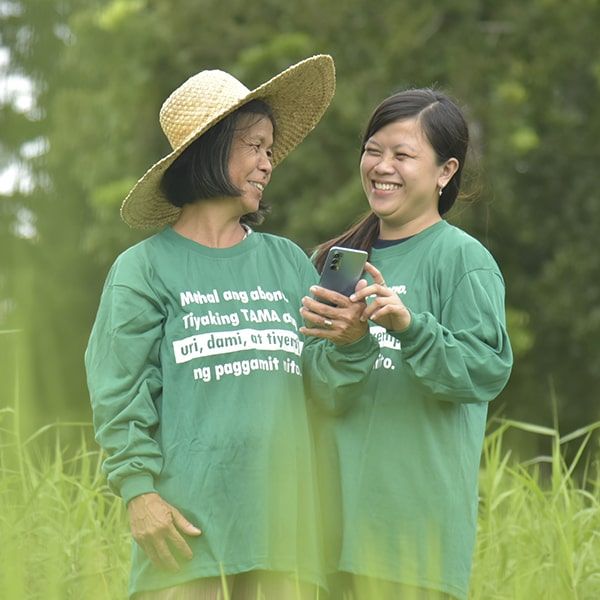
Use of renewable energy (solar, hydropower, wind) that can be used in agroindustry.
Biotechnologies in food production and preservation (e. g. bio-based polymers, fibers, construction materials, leather processing, etc.).
Food systems that promote local value chain, urban farming, and vertical farming practices so less use of fuel energy in the transport of produce. Hence, reducing CO2 emission.
Photo by: Joshua Mendoza, Anh Tuan, Arie Basuki, and Mark Albert Serrano
